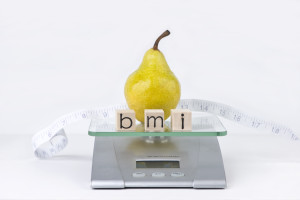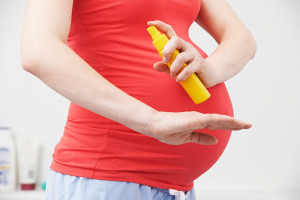 If you care about your personal fitness, then you probably closely monitor certain data factors. You document your PRs, you track distance on your GPS, and you measure your bike speed in MPHs. You also likely monitor your BMI, or body mass index, especially if you are monitoring your weight as part of your fitness plan. While tracking and measuring various fitness measurements can help you accomplish your goals, before you start to monitor your fitness progress using BMI as your sole benchmark, understand what BMI really means, and why it may not be a fair indicator of fitness.
If you care about your personal fitness, then you probably closely monitor certain data factors. You document your PRs, you track distance on your GPS, and you measure your bike speed in MPHs. You also likely monitor your BMI, or body mass index, especially if you are monitoring your weight as part of your fitness plan. While tracking and measuring various fitness measurements can help you accomplish your goals, before you start to monitor your fitness progress using BMI as your sole benchmark, understand what BMI really means, and why it may not be a fair indicator of fitness.
What is BMI?
BMI, or body mass index, is a simple mathematical formula that uses a person’s height and weight to determine his obesity. To calculate your BMI, divide your weight in pounds by your height in inches squared, then multiply the results by 703. The resulting BMI numbers are grouped into categories to determine whether your weight is normal, or if you are under or overweight:
- Underweight = <18.5
- Normal weight = 18.5 – 24.9
- Overweight = 25 – 29.9
- Obese = BMI of 30 or greater
BMI as a National Benchmark
BMI became a nationally-recognized standard measurement in June 1998 when the National Institutes of Health announced that BMI was to become their obesity measurement standard. The issue that many have identified with relying on a single BMI number as an indication of obesity is that the BMI calculation methodology skews a limited set of data factors and could falsely indicate that a fit, healthy person with little fat is overweight, when in reality, they are healthy and fit.
BMI as a Faulty Measure of Fitness
While BMI takes into consideration height and weight in calculating potential obesity, it is not a diagnostic tool. BMI fails to take into consideration several key factors of fitness, such as age, gender, waist size, and proper proportions of bone to muscle to fat. For example, since bone is denser than muscle, and twice as dense as fat, BMI does not properly account for those who have strong bones, dense muscle tone, and low levels of fat. Such individuals could calculate for themselves a BMI in the overweight range when truly, they are not at a high risk of the conditions complicated by obesity.
A Fair Measure of Fitness
If you are looking for a more accurate fitness calculation, many experts agree that waist circumference is a better indication of obesity than BMI. A waist circumference that is greater than 40 inches for men and 35 inches for women has been linked to a higher risk of type 2 diabetes, high blood pressure, abnormal cholesterol levels, and heart disease when BMI is 25 to 34.9.
Of course, if you are looking for the most reliable source of weight advice, you can always rely on guidance from your physician. To truly calculate your obesity risk, or to determine your level of “fitness,” a health care professional will assess a variety of factors, such as body fat percentage, diet, exercise patterns, and family history.
More
 If you have decided that you are ready to get pregnant then it’s time to learn all about ovulation. Understanding your ovulation cycle, and all of the factors that impact your fertility, will help you to put yourself in the best position to become pregnant when it is most desirable. Read our ovulation overview guide and checkout the tools and resources we’ve provided to help prepare yourself for your upcoming pregnancy. Then you better get started decorating that nursery!
If you have decided that you are ready to get pregnant then it’s time to learn all about ovulation. Understanding your ovulation cycle, and all of the factors that impact your fertility, will help you to put yourself in the best position to become pregnant when it is most desirable. Read our ovulation overview guide and checkout the tools and resources we’ve provided to help prepare yourself for your upcoming pregnancy. Then you better get started decorating that nursery!
Understanding Ovulation
Ovulation occurs when a mature egg is released from the ovary, travels down the fallopian tube, and is in position to be fertilized. The cycle occurs approximately once per month. In preparation for possible conception, the uterine lining thickens. If fertilization does not take place, the uterine lining and unfertilized egg will eventually shed and you experience menstruation. Women who are trying to become pregnant should understand the typical timing of their ovulation cycle in order to maximize their likelihood for conception during their available monthly window of fertility.
Tracking Ovulation
A woman’s monthly ovulation cycle should be measured from the first day of her menstrual period until the first day of the next period. For most women, their ovulation cycles last anywhere from 28 to 32 days, however this timing can vary significantly, which is why tracking your own personal cycle, rather than estimating a 30-day period, is essential in accurately determining fertile days. Most women ovulate between day 11 and day 21 of their monthly cycle, so to track the time period in which your body is most fertile, start with the first day of the last menstrual period, or calculate 12 to 16 days from the next expected period. It is important to understand that while it is possible to estimate your ovulation and track your fertility, ovulation may occur on a different day each month. The longer you track your ovulation the better your understanding will be of your body’s unique timing.
Tools and Calendars
Ready to start tracking? Here are some helpful digital tools that will make monitoring your menses easy.
- Ovulation Calculator — By answering a few questions regarding key dates surrounding your menstrual cycle, this free online ovulation calculator from WebMD helps you predict your most fertile days of the month.
- Pregnancy Test Calculator — This free online tool will tell you when you should take a pregnancy test for the most accurate results.
- The “Am I Late?” Calculator — This free online tool will help you determine if your menstrual cycle is late, and if you could be pregnant.
- Woman Calendar App — Available for Apple iPhone, iPad, and iPod Touch, this fertility awareness app is ideal for women trying to conceive. It can be used to track menstrual periods, to monitor physical conditions, and to schedule activities accordingly. Cost: $9.99
- WomanLog Calendar — Available for Apple and Android devices, this menstrual and fertility calendar for women offers an ovulation and fertility forecast, notifications, and tracking calendars. Cost: Free.
More

Pregnant Woman Spraying Mosquito Repellant To Protect Against Zika Virus
How to Stay Safe from Bugs and Bites this Summer
All eyes are on Rio this summer – both in anticipation of the summer Olympics, and as we hope for a resolution to the recent Zika virus outbreak. The recent virus epidemic has put Americans on high alert of the dangers of mosquitos and mosquito transmitted viruses. While there have been no known instances of mosquito-borne cases of Zika in the United States yet, all Americans, especially women, should protect themselves from the risk of mosquito bites. Before you reach for the bug repellent, understand the safest ways to stay bug bite free this summer.
Are Mosquito Repellents Safe?
Every year, over a million people across the globe die from mosquito-borne illness. Mosquito bites put us at risk for such diseases as West Nile virus, Malaria, Dengue fever, and Encephalitis. The Centers for Disease Control and Prevention (CDC) recommend the use of insect repellents to safely prevent mosquito-borne diseases. Repellents can be used to prevent bites, skin eruptions, and rashes.
How do Mosquito Repellents Work?
Mosquitos and other blood feeding insects are attracted to the carbon dioxide we release in our breath and to our skin odors. Repellents work at the skin level by masking our sent in a way that makes us unattractive for biting. Repellents do not kill the insects however, so it is still possible to see bugs flying nearby even after repellent spray has been applied. For best results, apply a liberal amount of repellent to exposed skin when you expect to be outside.
Active Ingredients
In most brands of mosquito repellents, the active ingredients include DEET or picaridin. Both of these ingredients are registered with the U.S. Environmental Protection Agency (EPA) for use as insect repellents on skin. This means that the EPA has evaluated them for potential side effects and has determined that they are not expected to cause serious adverse effects when used as directed.
Can Pregnant Women Safely use Insect Repellents?
Studies show that mosquitos are more attracted to pregnant women, due to the extra amounts of carbon dioxide they emit while pregnant. Your extra tempting scent means you should be extra careful this summer. The safest way for pregnant women to protect themselves from mosquito bites is still through the application of mosquito repellent. According to the CDC, there are no additional precautions that pregnant women should take when using insect repellents. Both DEET and picaridin have been determined to be safe for pregnant women by the EPA. Stay away from mosquito repellents that include lemon eucalyptus or IR3535 however, as they are not recommended for use during pregnancy.
If you have any questions or concerns talk to your OBGYN. And if you are looking for a top OBGYN practice in Western New York, we are accepting new patients. Give us a call today.
More
 As Buffalonians, we’ve all been there. You’re chatting with a new acquaintance from out of state, and no matter what time of the year it is, when you tell them you live in Buffalo they ask, “So is it snowing there now?” There is a national misperception that Western New York does not benefit from a wide range of seasons. In reality, the average temperature in Buffalo during the month of July is 80 degrees. During summer months, it is important that all women, regardless of age or activity level, stay hydrated. As we enjoy the dog days of summer, understand the signs of dehydration, and how you can stay cool and hydrated in Buffalo.
As Buffalonians, we’ve all been there. You’re chatting with a new acquaintance from out of state, and no matter what time of the year it is, when you tell them you live in Buffalo they ask, “So is it snowing there now?” There is a national misperception that Western New York does not benefit from a wide range of seasons. In reality, the average temperature in Buffalo during the month of July is 80 degrees. During summer months, it is important that all women, regardless of age or activity level, stay hydrated. As we enjoy the dog days of summer, understand the signs of dehydration, and how you can stay cool and hydrated in Buffalo.
H20 How Tos
We need to continually replace the water in our bodies that we lose urinating, perspiring, and even breathing. Our bodies use water to flush toxins, transport nutrients, and protect the sensitive tissues of the nose and mouth. Women need approximately 11 cups of water per day. If you’re wondering how you can possibly drink that much water, you should know that not all of your fluid intake needs to come directly from cups of water. About 20 percent of your daily fluid intake will come from food, and that percentage will increase if you choose water-rich foods like fruits and vegetables such as tomatoes and oranges.
The Heat Factor
While it is important to consume an ample amount of water daily, special consideration should be taken during warm weather months. On hot days increase your fluid intake, regardless of your activity level. Don’t wait until the first signs of thirst to reach for the water pitcher. Follow these tips to stay hydrated during the summer:
- Hydrate early and often. It’s easier to maintain your fluid balance if you start out in a well-hydrated state.
- Keep a water bottle on hand, and full, so you can frequently consume water throughout your day.
- Drink extra fluids after exercising.
- Do not try to over-compensate for periods without hydrating by drinking large amounts of water all at once. Doing so could lead to hyponatremia, a condition that occurs when the level of sodium in your blood is abnormally low.
Dehydration Signs and Symptoms
If you experience any of the following, you may already be dehydrated:
- Dry or sticky mouth
- Tiredness or lethargy
- Headaches or fuzzy-headedness
- Reduced urine output or urine that is dark yellow in color
- Sunken or dry eyes
An Important Note about the Elderly
While it is important for everyone, regardless of age or activity level, to remain hydrated, the hottest days of the year can be especially dangerous for the elderly, sick, and frail. As we age, our bodies’ water content decreases. In addition, certain medications that may be taken by the elderly may make them more susceptible to dehydration. To further complicate matters for the elderly, some conditions that impact comprehension, such as Alzheimer’s and dementia, can impact one’s ability to remember to stay hydrated. Dehydration, especially for the elderly, can cause serious sickness, and in the worst cases, even death. If you are caring for an elderly loved one, make sure they consume eight ounces of water every time they take medication. Make sure water is easily accessible to them throughout the day, and check-in with your loved one frequently to make sure they are not experiencing any signs or symptoms of dehydration.
More
 Fact: Almost 13,000 new cases of invasive cervical cancer will be diagnosed in the United States, and over 4,100 female lives will be lost due to the disease this year alone.
Fact: Almost 13,000 new cases of invasive cervical cancer will be diagnosed in the United States, and over 4,100 female lives will be lost due to the disease this year alone.
These frightening facts bring to light the terrible reality of the impact that cervical cancer is having on women across the nation. What gives us hope, despite these statistics, is the fact that cervical cancer is the easiest gynecologic cancer to prevent if women take part in regular screenings and follow-ups. There are two tests that your doctor can perform to identify the presence of cervical cancers:
- The Pap test, or Pap smear – This test can identify precancers, or cell changes on the cervix that have the potential to become cervical cancer cells if not properly treated.
- The HPV test – This test can identify human papillomavirus, a virus that can trigger cervical cancer development.
Screening Guidelines
It is generally recommended that women begin receiving regular Pap tests at age 21, and that women receive the test every three years between the ages of 21 and 65. Or, women age 30 and older can obtain the Pap test every five years, instead of three, if the procedure is combined with HPV testing.
Risk Factors
Certain risk factors may increase your chances of being diagnosed with cervical cancer. If you are at a greater risk for the disease, your doctor may recommend more frequent testing. Cervical cancer risk factors include:
- A previous diagnosis of cervical cancer.
- A previous Pap smear that showed precancerous cells.
- Having been exposed to diethylstilbestrol (DES) before birth.
- Being HIV positive.
- Having a weakened immune system due to an organ transplant, chemotherapy, or chronic corticosteroid use.
Cervical Cancer Prevention
While it is possible to prevent cervical cancer is through the early detection of precancerous cells, there are other preventive measures that women can take to lower their risk of developing this form of cancer. To help protect yourself from cervical cancer follow these preventative measures:
- Avoid contact with the human papillomavirus (HPV). HPV is the main cause of cervical cancer. Although HPV can be spread during sex, it can also be spread through skin-to-skin contact with an infected body area.
- Get vaccinated against HPV. It is important to understand that HPV vaccines only work to prevent the HPV infection, however they will not treat an existing infection. The Federal Advisory Committee on Immunization Practices (ACIP) recommends that girls ages 11 to 12 begin the vaccination series for HPV.
- Use condoms during sex. The effective use of condoms will help protect you from contracting HPV.
- Limit your number of sexual partners. The greater your number of sexual partners, the greater your chances of being exposed to HPV.
- Don’t smoke. Smoking may increase your risk of developing cervical pre-cancer, and cancer.
If you have questions regarding you risk factors, or steps you can take to lower your risk of developing cervical cancer, talk to your doctor today.
More
 If you’re pregnant or about to become pregnant, your number one priority is carrying your baby safely and healthily to full-term. No matter what your current state of health, or how prepared you feel you are to have a healthy pregnancy, every new mom should understand the warning signs of high-risk pregnancies.
If you’re pregnant or about to become pregnant, your number one priority is carrying your baby safely and healthily to full-term. No matter what your current state of health, or how prepared you feel you are to have a healthy pregnancy, every new mom should understand the warning signs of high-risk pregnancies.
What is a high-risk pregnancy?
Generally, a pregnancy is defined as high-risk if you or your baby has an increased chance of facing a health problem. Such problems could be caused by one of several underlying conditions, including:
These conditions put you and your baby at risk for complications like slowed fetal growth, a preterm labor, preeclampsia, or issues with the placenta.
Other factors that could result in a high-risk pregnancy include:
- If you are under 17 or over 35
- You use alcohol or illegal drugs
- You smoke
- You have an infection, such as HIV, hepatitis C, syphilis, cytomegalovirus (CMV), chickenpox, rubella, or toxoplasmosis
- You are having a multiple pregnancy
- You have had three or more miscarriages
- Your baby has been diagnosed with a genetic condition such as Down syndrome, or a heart, lung, or kidney condition
- You have been diagnosed with a serious condition such as heart valve problems, sickle cell disease, asthma, lupus, or rheumatoid arthritis
- You have had a serious problem with a previous pregnancy, such as a preterm labor, preeclampsia, or seizures (eclampsia)
- You are taking certain medications such as lithium, valproic acid, or carbamazepine
High-risk pregnancy treatment
Your OB-GYN will be able to diagnose whether or not your pregnancy is high-risk. If you are diagnosed as being high-risk, you should expect more frequent visits to your doctor than women whose pregnancies are not high-risk. Your OB-GYN will likely want you to receive more frequent ultrasound tests to confirm your baby is developing and growing at the proper rate. Your doctor will also closely monitor your blood pressure and more frequently test your urine for a protein that indicates preeclampsia or a urinary tract infection. If you have diabetes, asthma, or high blood pressure, your doctor may prescribe medications to help monitor such conditions.
Keep in mind that just because your pregnancy has been defined as high-risk does not mean that your baby will definitely be born with health issues. Under the care of your OB-GYN, and by following your prescribed treatment plan, you can welcome your new, healthy baby into the world without worry.
More
 With fad diet and celebrity endorsers promising “get slim quick” benefits of all liquid and juice-based diets, it sounds too good to be true. Unfortunately for those counting down the weeks until their next bikini-necessary vacation, the juice diet trend may actually be TGTBT. All juice diet programs claim to offer such benefits as detoxification, weight-loss, and overall wellness, but research shows that such extreme diets may cause more harm than good.
With fad diet and celebrity endorsers promising “get slim quick” benefits of all liquid and juice-based diets, it sounds too good to be true. Unfortunately for those counting down the weeks until their next bikini-necessary vacation, the juice diet trend may actually be TGTBT. All juice diet programs claim to offer such benefits as detoxification, weight-loss, and overall wellness, but research shows that such extreme diets may cause more harm than good.
Typically, on an all juice diet, a person limits themselves to only fruit juices, water, and fresh vegetables for any length of time from a few days to a few weeks. On average, the diet may restrict a person’s calories to only 1,000 to 1,200 per day. If cutting calories is the recipe for losing weight, how can all juice diets not produce results, and what other dangers might they pose?
You may exercise less. When you consume fewer calories, you have less energy, leaving you without the stamina needed to get the recommended 30 minutes of exercise three to five days per week, which is needed for heart, lung, muscle, and mental health.
They won’t satisfy hunger cravings. Without the fiber present in whole fruits and vegetables, an all-juice diet won’t keep hunger at bay, which leaves many people tempted to break their diet by snaking on unhealthy foods, and sabotaging their weight-loss goals.
Despite popular claims, they are not substitutes for whole fruits and vegetables. Juicing removes many nutrients available in whole produce, and despite their claims, scientists have not been able to prove that juicing is healthier than consuming whole foods. You can also order juicers online and make sure you can make healthy choices everyday.
You may consume too many calories. It can be difficult to measure liquid calories. With the average juice beverage offering anywhere from 100 to 350 calories per 16-ounce serving, consuming too much juice could actually increase your overall calorie consumption and sabotage your weight-loss goals.
They deprive you of essential nutrients. By only consuming juices, you eliminate critical nutrients from your body, especially fiber, protein, and fat (yes, you need fat in your diet!)
You may experience side effects. Some liquid dieters report experiencing such side effects as dizziness, nausea, constipation, fatigue and irritability.
You don’t really need to “detox” your system. Your body is able to filter out unwanted substances on its own, which means there really isn’t a need to “cleanse” your system.
They can spike blood sugar levels. Without the fiber found in whole produce, your body will absorb fructose more readily, which can raise blood sugar to unsafe levels.
You may lower your metabolism. When your body doesn’t receive the amount of food it needs for a prolonged period of time, it will adjust by lowering your metabolism to accommodate for the difference – maybe permanently.
It may exposure you to dangerous pathogens. Most juice diets suggest consuming unpasteurized juice, which could increase the chances of exposure to pathogens.
It could deplete your muscles. Depending on your age, size, and weight loss goals, remaining on a diet that is too calorically restrictive may result in your body using muscle tissue instead of fat for energy.
It’s not a proven cure for diseases. While some cleanses claim such miracle benefits as curing cancer, the reality is that no scientific evidence exists that proves an all-liquid diet can cure cancer or other diseases.
It is not a long-term diet solution. Will you lose weight by drastically reducing your calories for a period of time? Most likely yes, but what happens when you revert back to a non-all-juice diet? It is not feasible to remain on an all-liquid meal plan indefinitely, and when you revert back to eating higher calorie foods, you will likely gain back some of the weight you lost.
It can be dangerous for those with compromised immune systems. All juice diets are not healthy options for those women undergoing chemotherapy, diabetics, people with nutritional deficiencies, and people with kidney disease due to the high levels of sugar and potassium in most juices.
Instead of attempting a long-term fad diet, speak with your doctor about healthy ways to lose weight. He/she can help you to devise a weight-loss plan that suits your health goals and your lifestyle. And if you are looking for a new OB-Gyn and are in the Western New York area, we are accepting new patients.
More
 We’ve all been there. It’s Friday night and you decide to stay in with your husband. Half way through the movie, you’ve fallen asleep on the couch, and the next morning, you’re left trying to explain why couldn’t stay awake past 9:30 p.m. If you’re constantly feeling like you require more hours of sleep each night than your husband, know that there is science to help support your sleepiness. Studies show that women’s brains are more complex than those of their male counterparts, resulting in a greater need for more nighttime ZZZ’s.
We’ve all been there. It’s Friday night and you decide to stay in with your husband. Half way through the movie, you’ve fallen asleep on the couch, and the next morning, you’re left trying to explain why couldn’t stay awake past 9:30 p.m. If you’re constantly feeling like you require more hours of sleep each night than your husband, know that there is science to help support your sleepiness. Studies show that women’s brains are more complex than those of their male counterparts, resulting in a greater need for more nighttime ZZZ’s.
According to researchers, women tend to use more of their brains on a daily basis. Women are more likely to spend time multi-tasking, a behavior that maximizes their brains and requires more energy. To help revive them each night, women need about an extra 20 minutes of sleep compared to men.
Despite the fact that women need slightly more sleep than men, they are often pushing their bodies to the limit and are too often running on empty. Just a few of the reasons why women tend to get less overall sleep than men include such factors as being awoken by their male partners or children, pregnancy, and greater levels of stress and worry. The consequences of such exhausting behavior can be severe. Research has found that women who don’t get enough sleep are at risk of suffering from depression and are more likely to experience feelings of anger and hostility.
As if these side effects weren’t enough to make you start turning in early, researchers have also found that women who don’t get enough sleep are at a greater risk of overeating throughout the day. Data supports that women who go to bed earlier eat over 200 calories less than those who stayed up later. In addition, research finds that women who go to bed between 7:00 p.m. and 11:00 p.m. each night are more likely to eat healthy foods such as fruits, vegetables, and foods high in fiber. Women who stay up later, however, tend to eat more processed meats, foods higher in saturated fats, and consume more caffeine.
If you are among the millions of women suffering from lack of sleep and its side effects, know that you can obtain more hours of higher quality sleep at night by making small, simple changes to your daily routine. Follow these steps to get more quality nighttime shuteye:
- Plan to go to bed and wake up at the same time every day, even on weekends.
- Avoid consuming alcohol before bed.
- Reduce the amount of daily caffeine you consume.
- Eat your bigger meals earlier in the day.
- Try not to drink too much liquid before bed.
- While napping can help your body catch-up on lost sleep, avoid the temptation if it makes it difficult for you to go to bed at your normal bedtime.
If you believe you aren’t getting enough regular sleep, start listening to your body and make a plan to prioritize your health and wellbeing by striving for a better night’s sleep. Your body, mind, and soul will thank you.
And if you are having trouble falling or staying asleep, talk to your doctor. He/she can help you develop a plan to get back on a healthy routeneTru.
More
 In recent years there has been an increasing amount of dialogue and debate about the benefits of immunizations for newborns. While every parent needs to decide how best to safeguard the health of her child, it is essential to understand the benefits of immunizations, and the risks involved in choosing not to immunize. Before you choose to say “no” to vaccinating your baby, consider the following proven health benefits.
In recent years there has been an increasing amount of dialogue and debate about the benefits of immunizations for newborns. While every parent needs to decide how best to safeguard the health of her child, it is essential to understand the benefits of immunizations, and the risks involved in choosing not to immunize. Before you choose to say “no” to vaccinating your baby, consider the following proven health benefits.
Immunizations are Life Savers
Immunizations can save your child’s life. Today’s vaccines have proven to protect children from complex and deadly diseases that, in the past, took the lives of thousands of children each year. Vaccinations have helped to all but eliminate such diseases as smallpox, diphtheria, tetanus, yellow fever, whooping cough, polio, and measles. To continue to keep children safe from these diseases, each generation must maintain immunity through the use of proven childhood vaccinations.
Immunizations Help Prevent Lifelong Disabilities
Some vaccine-preventable diseases, even if not deadly, can result in prolonged health complications and disabilities. For example, pertussis, or whooping cough, can cause such complications as pneumonia, seizures, or brain damage, while polio can result in life-long paralysis. Since there is no cure for diseases such as polio, vaccination is the only way to protect children from possible lifelong disabilities associated with these diseases.
Immunizations are Safe
For parents fearing the potential risk factors of vaccinations, take comfort in knowing that vaccinations are both safe and effective. All vaccines are heavily tested and their results are monitored before being mass produced and distributed. While such mild side effects as discomfort, redness and tenderness at the injection site are known to occur, such factors should be of minimal concern compared to the risks of the diseases that vaccines prevent.
Immunizations are Required by Many Institutions
Many schools and health care facilities require children to be vaccinated before admittance. By choosing not to vaccinate your child, you may be limiting your child’s future opportunities for care and education.
Immunizations Protect the Future
Thanks to vaccinations, small pox is one disease that has been completely eradicated. Today, immunizations save an estimated 9 million lives around the world each year. Despite these advances, scientists believe that an additional 16 million deaths could be avoided annually if effective vaccines were deployed against all vaccine-preventable diseases. With more parents willing to vaccinate their children today, we have a better chance of protecting children tomorrow from the continued threat of preventable diseases and their long-term effects.
If you are considering whether or not to vaccinate your child, talk to your child’s doctor about the benefits and potential side effects of immunizing your newborn. Every parent wants to protect his child from health threats and give him the best chances to live a long and healthy life. Regular immunizations should be a part of every parent’s disease prevention plan for their child. With generations of proven effectiveness, parents can rest assured that the benefits of vaccinating their child will far outweigh any temporary discomfort.
More
 According to Cancer.org, approximately 1 in 8 women in the United States will develop invasive breast cancer during their lifetimes. This Mother’s Day, and every day, we remember that each year we lose mothers, daughters, sisters and friends to breast cancer while scientists rush to find a cure. As we hope and wait for a day when the world will be cancer free, there is something that women can do to help them to understand their potential risks and take proactive steps toward a potential early diagnosis and treatment plan. The breast cancer (BRCA) gene test is helping women to understand if they may be more susceptible to developing cancer, based on their genetic history, so that they can the necessary steps to fight back against breast cancer.
According to Cancer.org, approximately 1 in 8 women in the United States will develop invasive breast cancer during their lifetimes. This Mother’s Day, and every day, we remember that each year we lose mothers, daughters, sisters and friends to breast cancer while scientists rush to find a cure. As we hope and wait for a day when the world will be cancer free, there is something that women can do to help them to understand their potential risks and take proactive steps toward a potential early diagnosis and treatment plan. The breast cancer (BRCA) gene test is helping women to understand if they may be more susceptible to developing cancer, based on their genetic history, so that they can the necessary steps to fight back against breast cancer.
What is the BRCA Gene Test?
The BRCA gene test is a blood test that looks to identify mutations in those genes called BRCA1 and BRCA2 that help to maintain normal cell growth. Changes in these genes can help determine a woman’s likelihood for developing breast cancer as well as ovarian cancer during her lifetime. Women with mutated BRCA1 or BRCA2 genes are at a higher risk of developing the disease. It is important to understand that the BRCA gene test is not a way to identify if a woman has already developed cancer. It only tests for the presence of the mutated BRCA genes.
What Causes the Gene Mutation?
A mutation in the BRCA1 and/or BRCA2 genes can be inherited from either the mother’s or the father’s side of the family. It is estimated that approximately 2 or 3 out of 1000 adult women have a BRCA gene change.
Who Should be Tested?
Only women with a strong family history of breast or ovarian cancer, and women with a previous diagnosis, are encouraged to take the BRCA gene test. Before and after testing women are also encouraged to complete genetic counseling, a process that aims to help women to understand the benefits, risks, and possible outcomes of the test.
Other Factors to Consider
Women who meet any of the following criteria should ask their gynecologist or primary care physician if they are a candidate for the BCRA gene test:
- Have multiple cases of breast cancer in the family
- Have at least one family member who has had BRCA-related cancer
- Are an Ashkenazi Jew (a Jewish person whose ancestors came from Eastern Europe)
- Have one or more male family members who have had breast cancer
- Have been diagnosed with breast cancer before age 50
- Have had breast cancer in both breasts
- Have had breast cancer and ovarian cancer
What are the Potential Test Results?
The BRCA gene test may indicate that cells are normal, abnormal, or that the test results are uncertain. If the results are normal, or negative, it means the test identified no change in the BRCA1 or BRCA2 genes. If your results are abnormal, or positive, it means the test identified either BCRA1 or BRCA2 gene changes. Women with positive BRCA results have about a 35 to 84 percent chance of developing breast cancer and about a 20 to 40 percent chance of developing ovarian cancer. If the test results are uncertain, it may mean that a gene change is present but it cannot be determined how significant the change is, or if the change is indicative of an increased risk for developing cancer.
It is important to understand that only about 5 to 10 percent of breast and ovarian cancers are linked to the BRCA1 or BRCA2 gene change. A negative BRCA test may not guarantee a cancer-free lifetime, but for those at higher risk, genetic knowledge can be the first step in becoming extra vigilant, educated, and prepared with a plan for regular cancer screenings.
Until the Mother’s Day when we can celebrate a cancer-free world, consider your family history and speak with your doctor about whether or not the BCRA gene test is right for you.
More
 If you care about your personal fitness, then you probably closely monitor certain data factors. You document your PRs, you track distance on your GPS, and you measure your bike speed in MPHs. You also likely monitor your BMI, or body mass index, especially if you are monitoring your weight as part of your fitness plan. While tracking and measuring various fitness measurements can help you accomplish your goals, before you start to monitor your fitness progress using BMI as your sole benchmark, understand what BMI really means, and why it may not be a fair indicator of fitness.
If you care about your personal fitness, then you probably closely monitor certain data factors. You document your PRs, you track distance on your GPS, and you measure your bike speed in MPHs. You also likely monitor your BMI, or body mass index, especially if you are monitoring your weight as part of your fitness plan. While tracking and measuring various fitness measurements can help you accomplish your goals, before you start to monitor your fitness progress using BMI as your sole benchmark, understand what BMI really means, and why it may not be a fair indicator of fitness.








